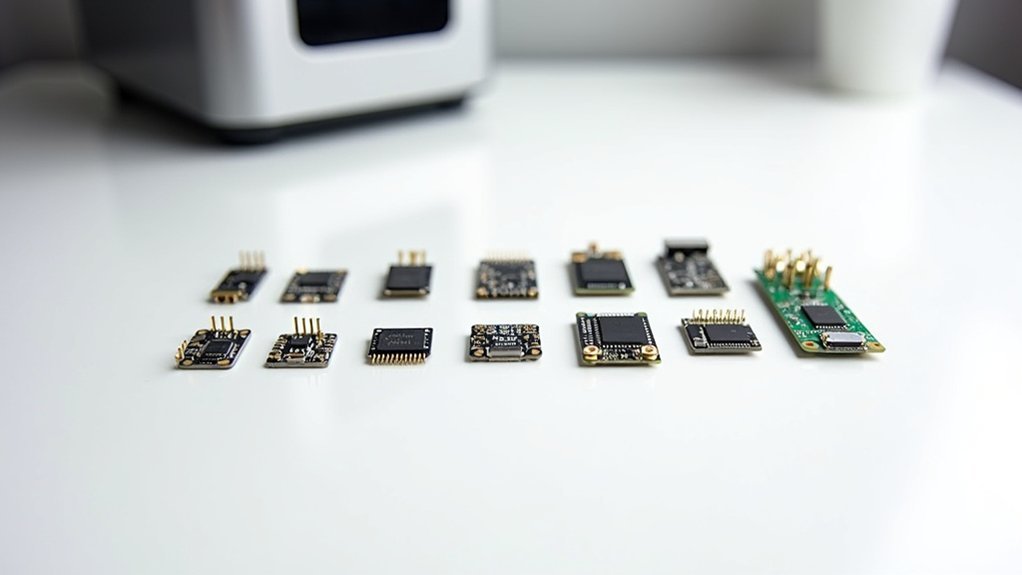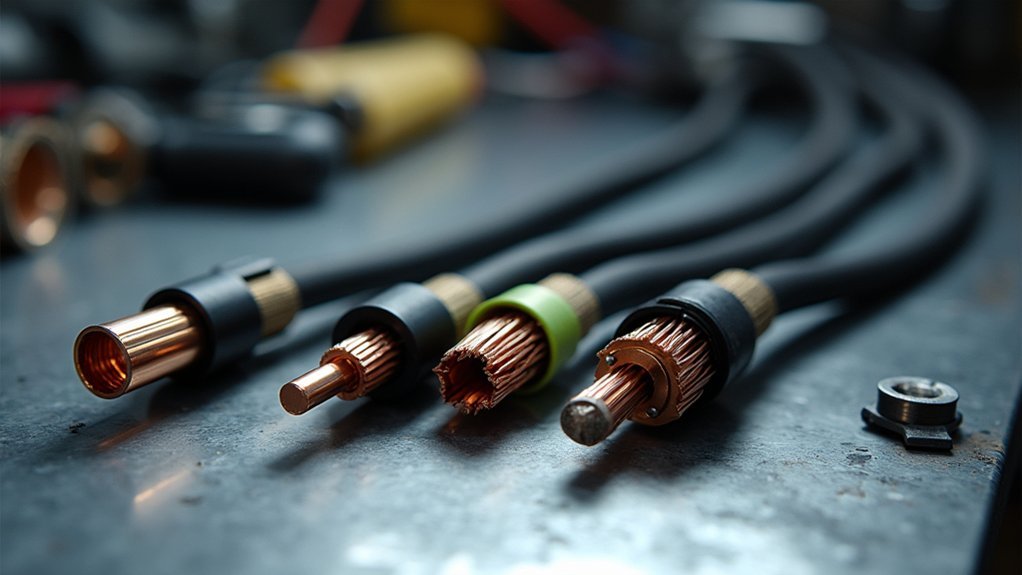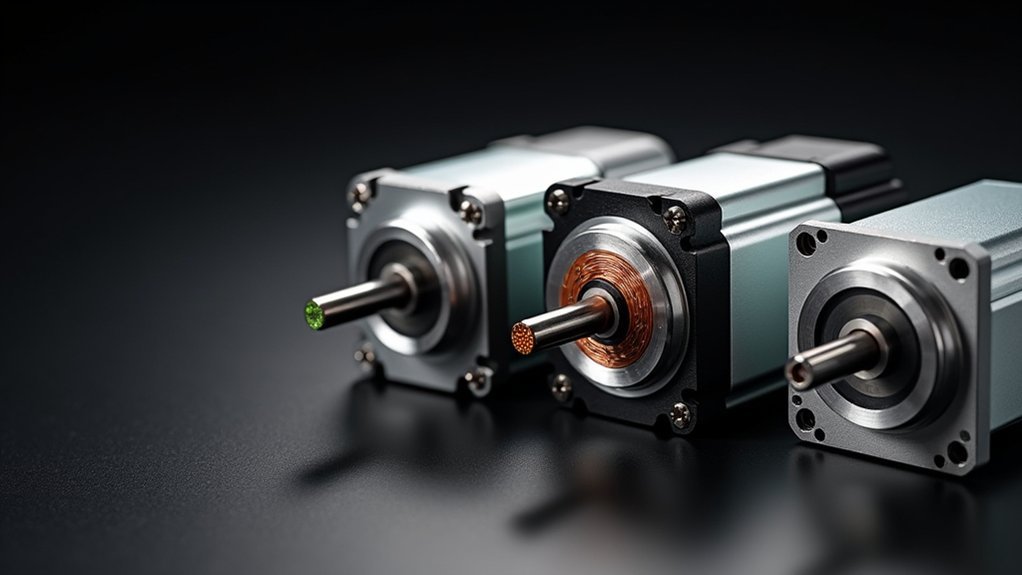You’re probably tired of rushing to your 3D printer every time something goes wrong or you need to check print progress. WiFi modules can transform your printing experience by giving you complete remote control from anywhere in your home or workshop. But with dozens of options flooding the market in 2025, choosing the right module isn’t as straightforward as you’d expect. The wrong choice could leave you with connectivity issues and compatibility headaches.
WiFi Module Robin WiFi V1.1 Wireless Router ESP8266 for 3D Printer
The WiFi Module Robin WiFi V1.1 delivers seamless wireless control for your 3D printer through its ESP8266 chipset, making it the ideal choice if you’re running a Robin Nano motherboard setup. You’ll appreciate the straightforward installation process that requires no complicated debugging procedures. The module enables document transfer via dedicated apps, cloud printing capabilities, and remote firmware upgrades. Its high transmission rate guarantees stable connections during long print jobs. At just 1.76 ounces and compact dimensions, it won’t add bulk to your printer. You’re getting proven compatibility with Robin mainboards and reliable wireless functionality for enhanced printing convenience.
Best For: 3D printer enthusiasts using Robin Nano motherboards who want wireless printing capabilities, cloud connectivity, and remote firmware updating without complex setup procedures.
Pros:
- Simple installation with no debugging required and seamless compatibility with Robin mainboards
- Comprehensive wireless features including app-based document transfer, cloud printing, and remote firmware upgrades
- Compact, lightweight design (1.76 oz) with high transmission rates for stable connections during extended print jobs
Cons:
- Limited compatibility as it’s specifically designed only for Robin Nano motherboard systems
- No detailed technical specifications provided regarding WiFi standards, range, or security protocols
- Relatively high ranking (#410,804) in Industrial & Scientific category suggests limited market adoption
MKS Robin WiFi V1.0 3D Printer Wireless Router ESP8266 Module
MKS Robin WiFi V1.0 stands out as an ideal wireless solution for makers seeking seamless remote control over their MKS Robin mainboard-equipped 3D printers. You’ll appreciate its ESP8266-based architecture that delivers reliable wireless connectivity without requiring assembly. The module’s compact 1.18 x 0.79 x 0.39-inch footprint won’t clutter your printer setup, while weighing just 1.76 ounces.
You can control your printer remotely through dedicated app functionality, making monitoring and adjustments convenient from anywhere. Installation proves straightforward and practical, meeting your replacement needs efficiently. With 24-hour customer support available through Amazon and extensive warranty coverage, you’re backed by reliable service when needed.
Best For: 3D printer enthusiasts and makers who own MKS Robin mainboard-equipped printers and want convenient wireless remote control and monitoring capabilities.
Pros:
- Compact, lightweight design (1.18 x 0.79 x 0.39 inches, 1.76 ounces) that won’t clutter your printer setup
- Easy installation with no assembly required and dedicated app for remote printer control
- Reliable ESP8266-based wireless connectivity with 24-hour customer support and warranty coverage
Cons:
- Limited compatibility as it only works with MKS Robin mainboard systems
- Relatively high marketplace ranking (#512,365 in Industrial & Scientific) suggests limited popularity
- No detailed technical specifications provided regarding wireless range or connection stability
Creality WiFi Box 2.0 3D Printer Wireless Printing Upgrade Kit
Creality’s WiFi Box 2.0 stands out as an ideal upgrade for makers who want to transform their existing 3D printers into wireless-capable machines without replacing the entire setup. You’ll appreciate its Bluetooth module that simplifies pairing and network configuration, plus the ability to control multiple printers from one location through wireless slicing.
The device offers real-time monitoring capabilities with its high-performance SoC, letting you track prints remotely. However, you should expect some setup challenges – users report connectivity issues requiring precise instruction following and potential need for static IP assignment. While the Creality Cloud Community provides helpful resources and troubleshooting support, you might encounter random freezes and reliability inconsistencies that affect overall performance.
Best For: Makers who want to upgrade existing 3D printers with wireless capabilities and remote monitoring without replacing their entire setup.
Pros:
- Bluetooth module simplifies device pairing and network configuration
- Enables control of multiple printers from one location through wireless slicing
- Real-time monitoring capabilities with high-performance SoC for remote print tracking
Cons:
- Setup challenges with connectivity issues requiring precise instruction following
- Users report random freezes and reliability inconsistencies affecting performance
- May require static IP assignment and heavy reliance on Creality app for functionality
3D Printer Controller with WiFi Module for Ender Series (BTT SKR MINI E3 V3.0)
For Ender series printer owners seeking professional-grade wireless control, this extensive 3D printer controller combines BTT’s SKR MINI E3 V3.0 mainboard with an integrated WiFi module and 3.5-inch TFT display. You’ll leverage a 32-bit ARM processor enabling high-speed remote printing through cloud connectivity. The system supports firmware upgrades via storage card and prevents mainboard damage through configurable stepper drive current. You can customize up to 15 command buttons and design personalized boot logos. MOSFET heat dissipation handles 12-24V power input while reducing heating bed current by 75%. Features include breakpoint support, power failure detection, and automatic shutdown capabilities.
Best For: Ender series printer owners who want professional wireless control capabilities and remote printing functionality with advanced customization options.
Pros:
- High-speed 32-bit ARM processor with WiFi connectivity enables remote printing and cloud access for enhanced workflow flexibility
- Comprehensive heat management with MOSFET technology reduces heating bed current by 75% while supporting 12-24V power input
- Extensive customization features including 15 programmable command buttons, custom boot logos, and protective features like power failure detection
Cons:
- Limited compatibility as it’s specifically designed only for Ender series printers with BTT SKR MINI E3 V3.0 control boards
- Requires technical knowledge for firmware upgrades and stepper drive current configuration to prevent potential mainboard damage
- No mention of technical support or documentation quality for troubleshooting complex wireless connectivity or customization issues
BIGTREETECH TFT35 V3.0.1 Graphic Smart Display Controller Board for 3D Printer
The BIGTREETECH TFT35 V3.0.1 proves ideal if you’re seeking versatility in your 3D printer’s display interface. You’ll get two distinct work modes: UART serial port screen mode with touchscreen functionality and traditional 12864 screen mode. The ARM Cortex-M3 STM32F207VCT6 chip delivers responsive 120MHz performance, while compatibility with Ramps 1.4 and RepRap systems guarantees broad usability.
You can switch between modes by pressing the encoder for three seconds, adapting to your workflow preferences. Reserved ports accommodate WiFi modules, filament detection, and automatic shutdown features. The firmware updates easily via SD card, and you’ll appreciate the customization options for logos and display settings that personalize your printing experience.
Best For: 3D printer enthusiasts who want the flexibility to switch between modern touchscreen and traditional display interfaces while having extensive customization options.
Pros:
- Dual mode functionality allows switching between touchscreen and classic 12864 display modes to suit different preferences
- Easy firmware updates via SD card with extensive customization options for logos and display settings
- Broad compatibility with popular control boards like Ramps 1.4, RepRap, and BTT SKR series
Cons:
- Some users experience installation challenges including fitting issues and connection problems
- Quality control inconsistencies reported with misalignment and non-functioning screens in some units
- Touch functionality is only available in serial port mode, not in 12864 mode
3D Printer for Child and Beginner with Wi-Fi & App Control (X-Maker Joy)
X-MAKER JOY transforms 3D printing into an accessible adventure for children and beginners who want wireless control without technical complexity. You’ll enjoy plug-and-play setup with a leveling-free bed and one-click printing through the smart app. The printer delivers impressive 0.05mm resolution at speeds up to 200mm/s while maintaining user-friendly operation across iOS, Android, and Windows devices. You can monitor prints remotely using the built-in HD camera and create time-lapse videos. With 15+ design modules, a 1500+ digital catalog, and customizable exterior decoration, you’ll have endless creative possibilities in this enclosed, beginner-focused system.
Best For: Children and beginners who want an easy-to-use 3D printer with wireless control and minimal technical setup requirements.
Pros:
- Plug-and-play setup with leveling-free bed and one-click printing via smart app
- High-quality prints with 0.05mm resolution and speeds up to 200mm/s
- Comprehensive package including 1500+ digital catalog, design modules, and built-in HD camera for remote monitoring
Cons:
- Limited to beginner-level projects and may lack advanced features for experienced users
- Enclosed design may restrict print size compared to open-frame printers
- Requires hotend reattachment after shipping which could be challenging for complete beginners
MKS Robin Nano V3.1 32bit Controller Motherboard with TS35 Touch Screen
MKS Robin Nano V3.1 stands out as an exceptional choice if you’re seeking a thorough upgrade that combines powerful processing with intuitive control. This 32-bit controller delivers impressive 168MHz processing speed, ensuring smooth and precise printing operations. You’ll appreciate the included TS35 touch screen that makes navigation effortless, while the built-in WiFi module enables remote monitoring and wireless control of your printer. The board supports dual Z-axis configuration for enhanced stability during tall prints. With UART3 interface and multiple expansion ports, you can easily add modules and customize your setup. It’s perfect whether you’re a beginner or experienced maker.
Best For: Both beginners and experienced 3D printer enthusiasts looking to upgrade their control system with a powerful 32-bit controller that offers intuitive touch screen control, wireless connectivity, and dual Z-axis support for enhanced printing precision and stability.
Pros:
- High-performance 168MHz 32-bit processor ensures smooth and precise printing operations with dual Z-axis compatibility for improved stability
- Intuitive TS35 touch screen interface combined with built-in WiFi module enables easy navigation and remote monitoring capabilities
- Multiple expansion ports including UART3 interface allow for future upgrades and customization options
Cons:
- Operating temperature limitation of 32°C may restrict use in warmer environments or require additional cooling considerations
- Made in China manufacturing may raise quality or support concerns for some users seeking domestic alternatives
- Relatively low sales ranking (#208 in 3D Printer Controllers) suggests limited market adoption compared to more established alternatives
3D Printer Control Board Kit for Ender Series Printers
Featuring a powerful 32-bit ARM processor and high-speed Wi-Fi connectivity, this 3D Printer Control Board Kit transforms Ender series printers into remotely accessible printing stations. You’ll appreciate the plug-and-play installation that works seamlessly with Ender printers and BTT SKR Mini E3 V3.0 compatibility.
The board supports multiple stepper drivers including 2208 and 2100 models, handling 12V to 24V input with 5A to 15A capacity. You can customize up to 15 command buttons and design your own interface. MOSFET technology reduces heating bed current by 25%, improving efficiency. The kit includes USB cable and optional TFT35 touchscreen, supporting various machine builds like XYZ, delta, and CoreXY configurations.
Best For: DIY enthusiasts and experienced 3D printer users who want to upgrade their Ender series printers with advanced features like Wi-Fi connectivity, customizable interfaces, and improved thermal management.
Pros:
- 32-bit ARM processor with Wi-Fi connectivity enables remote printing and firmware updates via storage card
- Supports multiple stepper drivers (4988, 8825, 8729, 2100, 2208) and various machine configurations (XYZ, delta, kossel, corexy)
- MOSFET technology reduces heating bed current by 25% for improved efficiency and heat management
Cons:
- Limited compatibility restricted to Ender series printers and BTT SKR Mini E3 V3.0
- TFT35 touchscreen and cable are optional additions, not included in the base kit
- Requires technical knowledge for customization features like designing custom interfaces and command buttons
TinyBee V1.0 ESP32 3D Printer Control Board with Marlin2.0 Support
The TinyBee V1.0 ESP32 3D Printer Control Board delivers professional-grade performance for makers who demand reliable wireless connectivity without sacrificing processing power. You’ll appreciate its ESP32 WROOM 32U with 8MB Flash storage and 240 MHz clock frequency that guarantees smooth operation. The board’s compact design installs within minutes while supporting Marlin 2.0 firmware and multiple display options including LCD2004 and 12864 screens. You can update firmware via USB and control your printer remotely through Wi-Fi connectivity. Its 32-bit MCU handles complex printing tasks efficiently, making it ideal for advanced 3D printing projects requiring wireless control capabilities.
Best For: Makers and 3D printing enthusiasts who need wireless connectivity and remote control capabilities for their printers while maintaining high processing power and firmware flexibility.
Pros:
- High-performance ESP32 processor with 240 MHz clock speed and 8MB Flash storage for smooth operation
- Built-in Wi-Fi connectivity enables remote monitoring and control of 3D printer via web interface
- Wide compatibility with Marlin 2.0 firmware and multiple display options including LCD2004 and 12864 screens
Cons:
- Limited availability and support as indicated by lower sales ranking (#419,264 in Industrial & Scientific)
- Requires technical knowledge for firmware updates and Wi-Fi configuration setup
- Compact 6.8-ounce design may limit expandability for advanced modifications or additional components
2.8″ ESP32 Module ESP32-2432S028R Smart Display Screen for Arduino IoT
DIYmall’s ESP32-2432S028R stands out as the ideal choice for makers who want a complete display solution alongside wireless 3D printer control. This module combines a dual-core 240MHz ESP32 processor with a crisp 240×320 ILI9341 display, eliminating the need for separate components. You’ll appreciate its extensive connectivity options including UART/SPI/I2C interfaces and built-in WiFi/Bluetooth capabilities.
The module excels in 3D printer monitoring applications, letting you view real-time print status, temperatures, and progress remotely. Users have successfully integrated it with printers like the Bambu Labs P1P. With FreeRTOS support and multiple sleep modes, it efficiently manages power while maintaining constant wireless connectivity for your printing operations.
Best For: Makers and developers who need an all-in-one ESP32 display module for IoT projects, particularly 3D printer monitoring and smart home applications requiring wireless connectivity and real-time data visualization.
Pros:
- Complete integrated solution with dual-core 240MHz ESP32 processor, crisp 240×320 display, and built-in WiFi/Bluetooth eliminating need for separate components
- Extensive connectivity options including UART/SPI/I2C interfaces, camera support, and TF card capability for versatile project integration
- Strong community support with proven success in 3D printer monitoring applications and multiple development framework options
Cons:
- Some users report quality control issues including dead pixels on arrival
- Programming difficulties reported by some users, potentially requiring technical expertise for setup
- Limited warranty information and potential return fees for items not meeting expectations
Factors to Consider When Choosing WiFi Modules for Remote 3D Printer Control
When you’re selecting a WiFi module for your 3D printer, you’ll need to evaluate several critical factors that directly impact your printing experience. Your module’s compatibility with your printer’s motherboard determines whether it’ll integrate seamlessly, while WiFi connection stability affects print reliability and remote monitoring consistency. You should also consider how straightforward the setup process is, what remote control features you’ll have access to, and whether the module supports firmware updates to maintain functionality over time.
Compatibility With Motherboards
Before purchasing any WiFi module, you’ll need to verify it’s compatible with your specific motherboard since not all modules work universally across different board types. Some modules are specifically engineered for seamless integration with certain boards, like those from the Robin series, delivering enhanced performance and simplified installation.
You must check firmware support compatibility, as mismatched firmware can greatly impact functionality. Each module comes with distinct installation requirements that vary by motherboard, so you’ll want to consult manufacturer documentation for compatibility specifications.
Modules supporting popular mainboards like BTT SKR or MKS Robin typically offer advanced features including remote printing and cloud connectivity. These enhanced capabilities can markedly improve your printing experience, making compatibility verification an essential first step in your selection process.
WiFi Connection Stability
Once you’ve confirmed motherboard compatibility, WiFi connection stability becomes your next priority for reliable remote printing control. Unstable connections can cause devastating print failures and costly interruptions during long printing sessions.
Look for modules with high transmission rates and robust connectivity protocols that resist signal interference and overcome range limitations. These features guarantee consistent data transfer throughout your entire print job.
Choose modules supporting multiple device connections, which enhance stability in environments with competing wireless signals. This capability helps maintain your printer’s connection even when other devices join your network.
Don’t overlook firmware upgrade capabilities. Regular updates address bugs and improve connectivity reliability over time, extending your module’s useful life and maintaining peak performance as technology evolves.
Setup and Installation
After guaranteeing stable connectivity, you’ll want to prioritize modules that offer straightforward setup and installation processes. Check compatibility with your 3D printer’s mainboard first – this guarantees seamless integration without requiring additional components or adapters.
Look for plug-and-play solutions that minimize complex debugging and configuration steps. These modules typically come with pre-configured firmware and clear setup instructions, saving you valuable time and frustration.
Measure your printer’s enclosure carefully and verify the module’s dimensions won’t obstruct existing components. Weight considerations matter too, especially for mobile printer setups.
Choose modules backed by detailed installation guides and responsive support resources. Quality documentation can transform a potentially challenging installation into a straightforward process, while reliable customer support helps resolve any unexpected issues quickly.
Remote Control Features
The remote control capabilities of your chosen WiFi module will determine how effectively you can manage your 3D printer from anywhere. You’ll want modules that support app-based control, giving you real-time monitoring and management through your smartphone or tablet. High-speed connectivity guarantees stable data transmission for critical tasks like firmware upgrades and file transfers.
Look for modules offering cloud printing capabilities, which let you send print jobs from any location with internet access. Essential remote functionalities should include firmware upgrading options, instant error notifications, and continuous print status updates. These features create a seamless user experience, allowing you to stay connected to your printing operations whether you’re across the room or across the globe.
Firmware Update Capability
When selecting a WiFi module for your 3D printer, firmware update capability stands as a critical feature that directly impacts your device’s longevity and performance. You’ll want modules that support convenient update methods like USB or cloud-based systems, eliminating complex procedures that can frustrate users.
Look for modules offering mobile app integration, enabling you to manage updates remotely from your smartphone or tablet. This flexibility guarantees you’re never tied to your computer for maintenance tasks.
Regular firmware updates deliver substantial benefits: improved performance, bug fixes, and new features that enhance your printing experience. Additionally, they strengthen security by patching vulnerabilities, protecting your printer from potential threats during remote operation. Choose modules from manufacturers committed to ongoing firmware development and support.
Frequently Asked Questions
Can I Monitor Multiple 3D Printers Simultaneously With One Wifi Module?
You can’t monitor multiple 3D printers with one WiFi module. Each printer needs its own dedicated module for independent control and monitoring. You’ll need separate modules to manage multiple machines simultaneously through your network.
What Happens if My Internet Connection Drops During a Print Job?
When your internet drops during printing, you’ll lose remote monitoring capabilities, but your printer continues operating independently. Most WiFi modules store print files locally, so your job won’t stop or fail unexpectedly.
How Secure Are Wifi Modules Against Unauthorized Access to My Printer?
You’ll face varying security levels depending on your module’s encryption protocols. Most modern WiFi modules offer WPA2/WPA3 encryption, but you should change default passwords and enable firmware updates for protection.
Do Wifi Modules Significantly Increase Power Consumption During Printing?
You’ll see minimal power increase during printing since WiFi modules typically consume 1-3 watts. Your printer’s heated bed and extruder draw markedly more power, making the module’s consumption negligible in comparison.
Can I Use Voice Assistants to Control My Wifi-Enabled 3D Printer?
You can control your WiFi-enabled 3D printer through voice assistants like Alexa or Google Assistant by integrating compatible smart home platforms, using IFTTT triggers, or connecting through specialized 3D printing voice control applications.





Leave a Reply